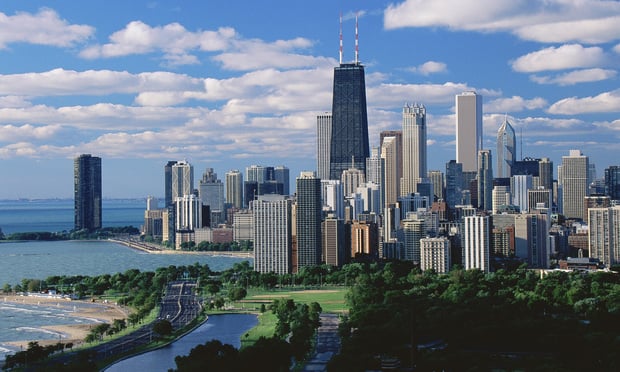COLUMBUS—Urban waterways in the US were once used primarily by heavy industry to help transport raw materials or as a place to dump wastewater. But most heavy industry has left the nation's urban cores, and modern planners have started to recognize that a clean, natural waterway can bring a measure of beauty and grace to a cityscape. As a result, instead nurturing factories or other industrial operations, urban rivers and lakes are now used to attract multifamily developments, new retail, and upscale office spaces.
Columbus was never a center of heavy industry, but it has become the latest American city to reconstruct a waterway in order to foster a downtown renaissance. In the 1920's, the city built the Main Street Dam across its Scioto River in the belief that as a major-league city, Columbus “should have a major-league river,” Guy Worley, president and chief executive officer of the Columbus Downtown Development Corp., tells GlobeSt.com. Although the river did indeed widen from 300 feet to 600 feet, the plan misfired as the waterway changed into a “sedimentation pond. It wasn't flowing and it wasn't clean.”
But in 2013 and 2014, the CDDC coordinated the removal of the Main Street Dam to restore the river's natural flow. The move narrowed the river back to about 300 feet and opened up about 33 acres of additional green space. Called Scioto Greenways, it has given the city the opportunity to create new downtown parkland and recreation options. As reported in GlobeSt.com, the downtown office market has been showing increased strength, and the CDDC expects the new parkland will accelerate that growth and attract even more residents to an already-burgeoning multifamily sector.
The dam removal was just the latest in a series of steps taken by the city since 2002. That year, Mayor Michael B. Coleman began a strategic planning process for the downtown with the aim of making a world-class CBD. “Our entity was created to implement this entire strategic plan,” Worley says. One of the first projects was the Scioto Mile, 145 acres of parkland along the east side of the river from the Arena District to the Whittier Peninsula. Modeled on Chicago's lakefront Millennium Park and best known for its 15,000 square-foot fountain, the Scioto Mile also has restaurants, a rose garden, performance spaces and many other amenities. “That really started to bring people back down to our riverfront.”
The new parkland was ready for the city's bicentennial celebration in 2012, but municipal leaders were not yet satisfied. In 2010, they had started another strategic planning process to examine next steps, Worley says. Officials felt “now that we've got a new riverfront, let's turn the river itself into an amenity.” The process, which included public meetings that generated thousands of ideas, resulted in the takedown of the Main Street Dam.
The efforts have “really been a catalyst for residential development in our downtown,” Worley says. “People want to work and live near green space.” Between 2002 and 2014 the number of downtown residential units almost doubled, according to the CDDC. And at end of 2014, eight residential projects with a total of 785 units were under construction. The $270 million worth of investments also includes 105,000 square feet of new retail and 275,000 square feet of office space. The recently-announced Two25 project, for example, calls for a $90 million, 17-story mixed-use tower to be built downtown at Columbus Commons Park just a few blocks from the Scioto Mile.
“Seven or eight years ago,” Worley says, “the land just to the east was filled with empty buildings and parking lots; now an entire neighborhood has been built.” He hopes that yet another master plan, this one for the 56-acre Scioto Peninsula just to the west of downtown, will do something similar for that side of the river. Builders will soon break ground on the effort's centerpiece, the 53,000 square-foot Ohio Veterans Memorial and Museum, which Worley says will attract visitors from all over the state.
The new riverfront “will be like our city's living room,” he adds. “When you think of Columbus, you will now think of our riverfront.”
© Touchpoint Markets, All Rights Reserved. Request academic re-use from www.copyright.com. All other uses, submit a request to [email protected]. For more inforrmation visit Asset & Logo Licensing.







